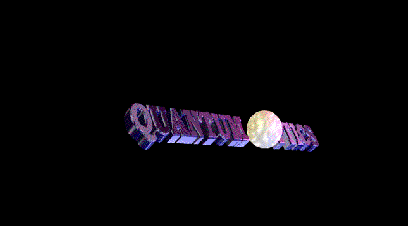

General Information (dowload pdf)
"Recommended" Texts:
* "Atom-Photon interactions"- Cohen-Tannoudji,
* "Quantum Optics" - Scully and Zubairy,
* "Quantum Optics" - Walls and Milburn
We will not be following any of these texts directly . They all have strengths in different areas and are good to have on your bookshelf.
Other Texts:
Recent books (published within the last ten years)
* Elements of Quantum Optics, by P. Meystre and M. Sargent
* Photons and Atoms: Introduction to Quantum Electrodynamics,
by Claude Cohen-Tannoudji et al.
* Optical Coherence and Quantum Optics, by L. Mandel and E. Wolf
* Lasers, by P. Milonni and J. H. Eberly
* Quantum Noise, by C. Gardiner (alsoHandbook of Stochastic Methods)
* Statistical Methods in Quantum Optics 1, by H. J. Carmichael
Old standards
* Optical Resonance and Two-Level Atoms , by Allen and J. H. Eberly
* Quantum Statistical Properties of Radiation, by W. H. Louisell
* Quantum Properties or Radiation, R. Loudon
* Laser Theory, by H. Haken
Grading:
· Problem Sets (~4-5 assignments) 30%
· Final Projects 70%
· Problem sets will be available on the web, about once every
other week. Generally assignments will be due on Friday in the TA's mailbox
by 5:00 PM.
Tentative Syllabus (dowload pdf)
I Foundations
A. Review of Quantum Mechanics: Hilbert space, operators, states, time evolution.
B. Two level systems - Pauli algebra, Bloch-sphere, Rabi flopping.
II. Optical resonance for two level atoms
A. Atom-photon interaction in electric dipole approximation.
B. Pseudo-spin formulation.
C. Inhomogeneous broadening - Photon echo.
D. Density matrix formulation.
E. Phenomelogical damping - master equation and rate equations.
III. Three level systems
A. Raman transitions - effective two level system
B. Coherent population trapping, EIT, lasing without inversion, etc.
C. Quantum jumps and the "Quantum Zeno Paradox"
IV. The electromagnetic vacuum
A. Quantization of the electromagnetic field.
B. Spontaneous emission.
C. Resonance fluorescence and dressed-states: Mollow triplet.
V. Nonclassical light
A. Coherent states as quasi-classical states.
B. Jaynes-Cummings model Vacuum Rabi splitting, collapse and revival.
C. Theory of partial coherence - Glauber correlation functions
D. Photon counting statistics
E. Squeezed states
VII. Theory of dissipation in quantum mechanics
A. System reservoir interaction.
B. Derivation of the Linblad master equation in the Born-Markov approximation.
C. Damped two-level atom and simple harmonic oscillators.
D. Heisenberg formulation - Langevin equations
VII Theoretical methods for solving the master equation
A Phase space methods - Quasiprobability distributions, P,Q, Wigner functions, Fokker-Planck Equation.
B. Quantum trajectories - Stochastic wave function techniques.
C. Continuous measurement and quantum feedback.
VIII Experimental paradigms
A. Cavity QED
B. Ion Traps
C. Parametric down conversion and correlated photon interferometry
IX Experimental tests of foundations of quantum mechanics
A. Decoherence and quantum measurement
B. EPR and Bells inequalities
C. Test of complementary - the quantum eraser
D. Quantum-state reconstruction
E. Quantum information
Problem Set #1 Solutions |
|
Problem Set #2 Solutions |
|
Problem Set #3 Solutions |
|
Problem Set #4 Solutions |
Final Project (download pdf)
As a final project fro the class, you are required to undertake independent research in an area of quantum optics of interest to you. Possible topics are listed below, though you may propose something else with my approval. For each topic, you are asked to research both the theoretical as well as experimental aspects, and write a review article, no longer than 10 pages, 1.5 spaced, including figures and references, in the style of the APS journal, Physical Review A (see their web site for details on the format). Your paper will be "refereed" by an anonymous student in the class as well as myself. You must modify the paper in accordance with our criticisms and "resubmit" until the referees are satisfied.
Target Dates:
· Submission of abstract of project: Tues. Oct. 26
· Abstract accepted or modified: Thurs Oct. 28
· Submission of first draft: Tues. Nov. 23
· Referee Comments due: Tues. Nov. 30
· Re-submission: Tues. Dec. 7
· Final Referee decision: Thurs Dec. 9
TOPICS
A. Laser spectroscopy
1. Atomic clocks.
2. Electromagetically Induced Transparency (EIT).
3. Lasing without inversion.
4. Resonance fluorescence for multiple atoms (super-radiance/ super-fluorescence).
B. Atom cooling and trapping
1. Ion trapping and laser cooling.
2. Laser cooling and trapping of neutrals - Magnetic, Optical, and Magneto-Optic Trap (MOT).
3. Sisyphus cooling and optical lattices.
4. Atom interferometry.
5. Bose-Einstein Condensation of alkali gases and atom lasers.
C. Cavity QED
1. Microwaves and Rydberg atoms.
2. Optical Cavity QED and alkali atoms.
3. Modification of spontaneous emission for atoms in cavities.
4. VCELS and cavity QED in solids.
5. Micromasers (with atoms) / microlasers (in solids).
6. Photonic bandgap materials as optical cavities for QED.
D. Nonclassical light
1. Production of squeezed states via four-wave mixing, parametric oscillation,
second harmonic generation.
2. Correlated two-photon production via parametric downconversion.
3. Two photon-interferometry.
4. Nonclassical light in atom-photon interactions
(atoms in squeezed light, nonclassical light in resonance fluorescence).
5. Noiseless amplification.
6. Quantum optics of optical solitons.
E. Quantum Information Processing
1. Quantum Cryptography.
2. Quantum teleportation and dense-coding.
3. Nonclassical atomic motion engineering with trapped ions.
4. Quantum computing with trapped ions.
5. Quantum computing with cavity QED.
6. Quantum computing in optical lattices.
7. Quantum state tomography and state measurement.
F. Tests of the foundations of quantum mechanics
1. EPR and Bell's inequalities.
2. Complementarity and "which way" experiments - The quantum eraser.
3. Quantum jumps and the "Quantum Zeno Effect".
G. Quantum Measurement Foundations
1. Quantum nondemolition measurement.
2. Continuous measurement and quantum feedback.
3. Stochastic wave function methods and quantum measurement.
4. Decoherence and the quantum-classical transition - theory and experiment.
Final Project Publication
Electronic Journal - Reviews of Quantum Optics, Vol. 1